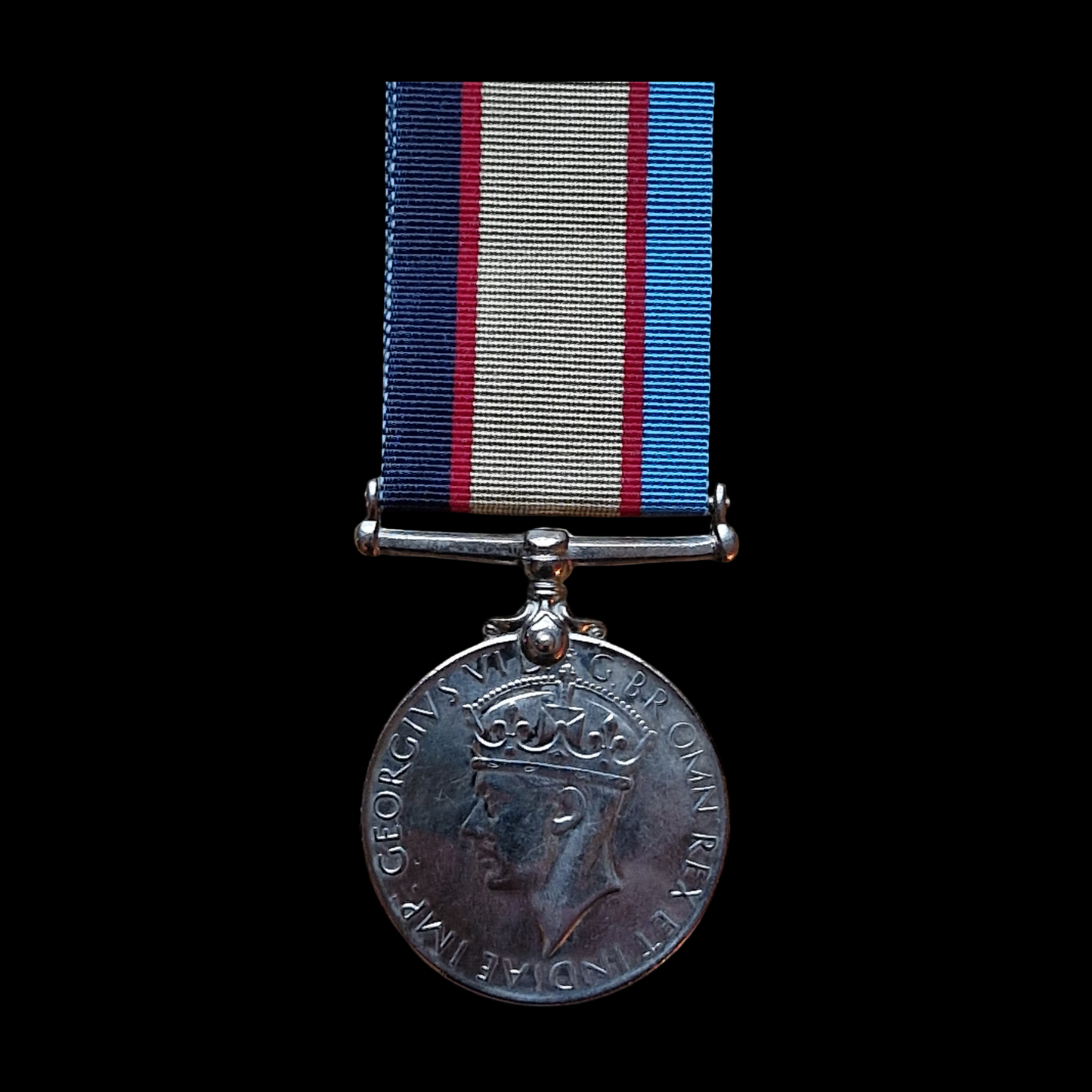









































Second World War Australia Service Medal 1939–1945 - Staff Sergeant Norman Dennis O’Neil
Australia Service Medal 1939–1945 - V1153 N. D. O'NEIL
Staff Sergeant Norman Dennis O’Neil (V1153) was born on 16 June 1898 in Northcote, Victoria, the son of Dennis Stephen and Florence Annie O’Neil (née McDonnell). Before the Second World War, he worked as a clerk and lived with his wife, Daisy Catherine Ellen O’Neil (née McAuley), at 32 Symon Street, West Preston, Victoria. The couple had married in 1929, and Norman was remembered by family as a steady and intelligent man who had already served his country once before.
Norman’s first period of service began when he enlisted in the Australian Imperial Force at Melbourne on 13 September 1915, aged just 18 years and three months. He was then a labourer by trade, unmarried, and a member of the Roman Catholic faith. On enlistment he stood 5 feet 6 inches tall, weighed 9 stone 4 pounds, and had fair hair, blue eyes and a ruddy complexion. He bore a mole on one arm and a small scar on the right side of his neck. Declaring his previous service with the 54th Northcote Citizen’s Militia and Senior Cadets, he was accepted for overseas service and assigned the regimental number 2199.
O’Neil initially joined the 15th Reinforcements of the 4th Light Horse Regiment, training at Seymour and Royal Park before attending the Signal School at Broadmeadows, where he qualified as a despatch rider. In early 1916 he transferred to the 3rd Battalion and then to the 8th Battalion, serving as a Private. He embarked from Melbourne on 9 March 1916 aboard H.M.T. Corsican, bound for Egypt, before continuing to England later that year, where he trained at Perham Downs on Salisbury Plain. He crossed to France in December 1916 and was taken on strength of the 8th Battalion, Australian Imperial Force, which was then engaged on the Western Front as part of the 2nd Infantry Brigade.
Norman served through the bitter campaigns in France and Belgium, working as both a rifleman and a despatch rider attached to the battalion’s signals section. His duties often involved carrying important messages between forward and rear positions under shellfire — among the most dangerous jobs on the front line. His service record shows that he endured several bouts of illness, being treated in hospital at various times in 1916 and 1917, but always returning to duty. On 28 October 1917 he was wounded in action in France, though only slightly, and a Base Records Office letter dated 29 November confirmed that he was “wounded slightly and remaining at duty.”
He recovered and continued to serve with the battalion through 1918, being transferred to the 1st Division Signal Company on 17 March 1918. His work as a signaller and despatch rider placed him in constant danger, particularly during the German spring offensive and the later Allied advances. The records show that he remained with his unit throughout the remainder of the war, serving with courage and reliability until the Armistice.
After the fighting ceased, he continued in France and Belgium until March 1919, then returned to England and finally embarked for Australia aboard the Medic. He was discharged from the A.I.F. on 16 May 1919, having served for over three years and five months overseas in Egypt, England and France.
When the Second World War broke out more than twenty years later, Norman once again stepped forward to serve. He enlisted at Caulfield, Victoria, on 1 July 1940, joining the Australian Army Medical Corps. His previous military experience and clerical background were quickly recognised, and he rose through the ranks to become a Staff Sergeant. His postings included several major hospitals across Victoria, among them Royal Park, Geelong, Broadmeadows and Heidelberg, as well as service with 78 Camp Hospital under Southern Command.
Staff Sergeant O’Neil’s role was largely administrative and supervisory, ensuring that records, supplies and personnel matters were efficiently managed in the busy wartime hospitals caring for soldiers from across the state. His steady nature and long experience of military life made him a valuable senior non-commissioned officer. Unfortunately, after several years of devoted home-front service, his health began to fail. He was admitted to the 115th Australian General Hospital, Heidelberg, suffering from heart trouble, and died there on 18 October 1943 from cardiac failure. He was 45 years old.
He was buried with full military honours in Springvale War Cemetery, Melbourne (Plot 1.O.A.15), where his headstone bears the simple but fitting inscription:
“A quiet sleep after pain and strife.”
He is commemorated on the Roll of Honour at Preston, Victoria, and on Panel 88 of the Commemorative Area at the Australian War Memorial, Canberra. His wife Daisy Catherine Ellen O’Neil, of West Preston, survived him by many years, passing away in 1978.
Norman Dennis O’Neil’s life reflected a rare devotion to duty. He was a man who, as a teenager, carried messages under fire on the Western Front, and who, in middle age, gave his skills and leadership once again to his country in its time of need. His service across both world wars — in the mud of Flanders and the hospitals of Victoria alike — stands as a testament to quiet courage, endurance, and lifelong commitment to others.
PLEASE NOTE: All research will be sent to the buyer via email. I am unable to provide printed copies, as I do not have access to a printer
AJMS Medals









































